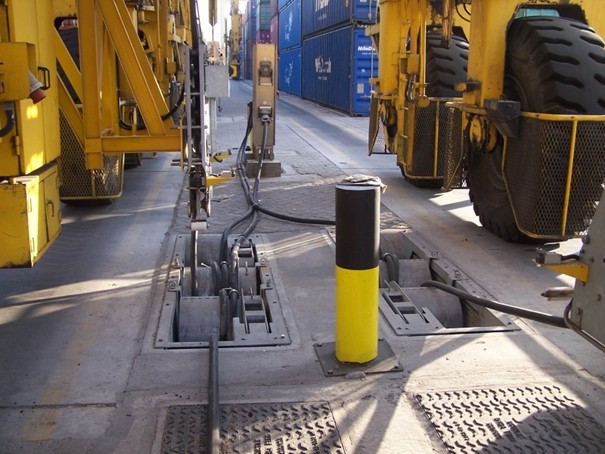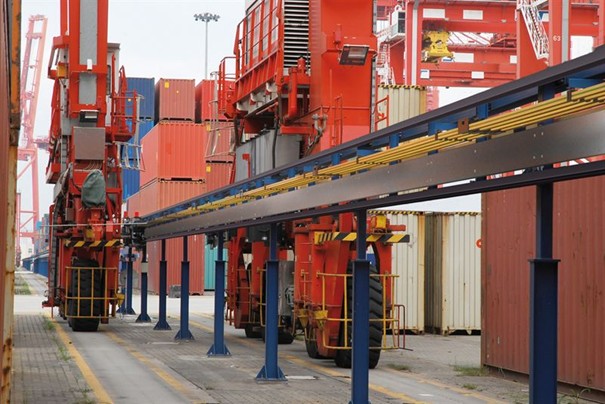Why is electrification important for reducing terminal emissions?
Electrification of Port Terminals: A Sustainable Strategy
Electrification of port terminals represents a vital strategy for reducing emissions and advancing sustainability goals in maritime logistics. By transitioning from fossil fuel-powered equipment to electric alternatives, container terminals can significantly decrease their carbon footprint while improving operational efficiency. Electrification eliminates direct diesel exhaust emissions at the source and supports broader decarbonisation efforts across the supply chain. This transition aligns with increasing regulatory pressures, stakeholder expectations, and the industry challenges related to contributing to global climate targets. However, successful implementation requires thoughtful planning, appropriate infrastructure, and a strategic approach to ensure operational performance is maintained or enhanced.
Understanding Electrification in Port Terminals
Electrification in port terminals involves the systematic replacement of conventional diesel-powered equipment with electric alternatives powered by batteries or direct grid connections. This fundamental transition encompasses the entire terminal ecosystem, from quayside operations to horizontal transport and yard equipment. At its core, containter terminal electrification requires implementing charging infrastructure, power management systems, and operational adaptations to support this new equipment paradigm.
The shift from fossil fuels to electricity represents more than simply swapping equipment types—it necessitates rethinking operational strategies and terminal layouts. Modern electrification approaches include:
- Battery electric vehicles (BEVs)
- Cable-reel systems
- Bus bar solutions
- Shore power connections for vessels at berth
However, electrification is not just about purchasing new equipment; it requires careful consideration of operational impacts, charging strategies, and power supply reliability to maintain terminal performance.
For many terminals, electrification presents an opportunity to modernise operations while addressing environmental imperatives. This transition typically happens gradually, with terminals identifying which equipment to electrify first based on replacement cycles, operational requirements, and emissions reduction targets.
How does Electrification Reduce Terminal Emissions?
Electrification directly reduces terminal emissions by eliminating the combustion of diesel fuel in equipment operations. This immediate effect removes harmful local pollutants including nitrogen oxides (NOx), particulate matter, and carbon monoxide at the point of use, creating cleaner air quality throughout the terminal environment and surrounding communities.
The carbon reduction benefits depend significantly on the electricity source. When powered by renewable energy, electric equipment can operate with near-zero carbon emissions. Even when using standard grid electricity, electric equipment typically produces fewer emissions than diesel equivalents due to the higher efficiency of electric motors compared to internal combustion engines.
Key emission reduction benefits include:
- Elimination of direct diesel exhaust emissions
- Reduced noise pollution for workers and nearby communities
- Decreased secondary pollution from fuel storage and handling
- Lower carbon footprint, especially with renewable energy sources
- Improved air quality in the terminal and surrounding areas
For terminals seeking to achieve ambitious emission reduction targets, electrification represents one of the most effective and proven pathways. However, optimising operational efficiency should precede or accompany electrification efforts, as reducing unnecessary container moves can substantially decrease energy consumption without new technology investments.
What Equipment can be Electrified in Modern Terminals?
Virtually all terminal equipment can be electrified with today’s technology, though implementation approaches vary based on operational requirements and equipment types.
| Equipment Type | Electrification Options | Key Benefits |
| Horizontal Transport | Battery-electric yard tractors, straddle carriers, AGVs | Zero local emissions, reduced noise, lower maintenance |
| Yard cranes | Cable-reel systems, bus bar solutions | Improved performance, reduced maintenance, zero emissions |
| Ship-to-Shore Cranes | Energy recovery systems, optimisation | Energy recapture during lowering operations, efficiency gains |
| Vessels at Berth | Shore power installations | Elimination of auxiliary engine emissions during port stays |
Automated equipment often pairs naturally with electrification, as the precision and consistency of automated operations complement the characteristics of electric powertrains. However, electrification benefits can be achieved in both manual and automated terminal environments with appropriate planning.

Figure 1: RTG cranes with a cable reel system

Figure 2: RTG cranes with a bus bar solution
What are the Operational Benefits beyond Emission Reduction?
Electrification delivers numerous operational advantages beyond environmental benefits:
- Lower maintenance requirements – Fewer moving parts, simpler mechanical systems, reduced wear
- Extended equipment service life – Less mechanical stress and component degradation
- Higher energy efficiency – Electric motors convert significantly more energy to mechanical work than diesel engines
- Reduced operating costs – Lower energy consumption and more predictable electricity prices
- Improved worker conditions – Better air quality and reduced noise levels
- Enhanced control precision – More responsive equipment with smoother operation
- Better data integration – Advanced monitoring, predictive maintenance, and system optimization
Worker conditions also improve substantially in electrified terminals. The elimination of diesel exhaust fumes creates healthier air quality, while reduced noise levels enhance communication, decrease stress, and lower the risk of noise-induced health issues. These improvements can contribute to higher productivity, better job satisfaction, and lower staff turnover.
How can Terminals Overcome Electrification Implementation Challenges?
Successful terminal electrification requires addressing several common challenges through careful planning and a strategic approach.
| Challenge | Solution Approach |
| Significant upfront investments | Phased implementation aligned with equipment replacement cycles; prioritise high-impact assets |
| Power infrastructure upgrades | Detailed power requirement analysis based on operational patterns |
| Operational adaptation | Develop charging strategies that minimise workflow disruption |
| Equipment selection | Simulation modelling to test different equipment types before committing |
| Terminal-specific requirements | Tailored approaches based on each terminal’s unique characteristics |
The importance of tailoring electrification approaches to each terminal’s unique characteristics cannot be overstated. Detailed simulation analysis enables terminals to evaluate impacts on performance, determine optimal fleet sizes and battery requirements, identify ideal charger placements, and develop charging strategies that meet the terminal’s specific conditions and operational needs.
Key takeaways: Planning your terminal electrification strategy
- Understand your emissions profile – Map emissions per asset to identify high-impact opportunities
- Adopt a gradual, phased implementation – Build expertise while distributing capital expenditure over time
- Utilize simulation modelling – Test scenarios without disrupting operations to minimize risk
- Consider operational efficiency holistically – Reduce unnecessary container moves to amplify electrification benefits
- Align with broader sustainability goals – Integrate electrification with overall environmental strategy
For comprehensive assistance with your electrification journey, consultancy services can provide the expertise needed to navigate complex transitions.
Interested in Discussing Electrification in Container Terminals?
Related Articles
- What failover systems maintain terminal operations when automation components malfunction?
- What factors determine berth capacity at a terminal?
- How do mobile charging units provide flexibility in evolving terminal layouts?
- What automated reporting systems provide real-time visibility into terminal performance?
- How does electrification impact yard crane operations?